Bagalamukhi: The Paralyzer of Enemies
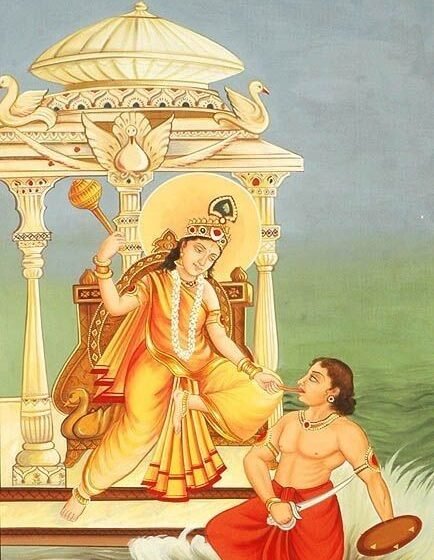
Bagalamukhi is the eighth goddess in the Mahavidyas of Shaktism. a female oriented worship of the divine, where the divine feminine is given utmost importance and is viewed as the ultimate reality. Her name Bagalamukhi means someone who renders a rein. In Hinduism, especially in the Shakta sect, she is viewed as the goddess who breaks and stomps on the misconceptions of the devotees. In the northern part of India, the goddess is known by the name of Pitambri. Bagalamukhi is worshiped and revered for her ability to paralyze the enemies, bring peace, and bestow victory over adversaries. Her name also means the one who has a crane like face, which symbolizes her power to immobilize and stun the enemies. Devotees worship her for protection, success in legal battles, and overcoming obstacles.
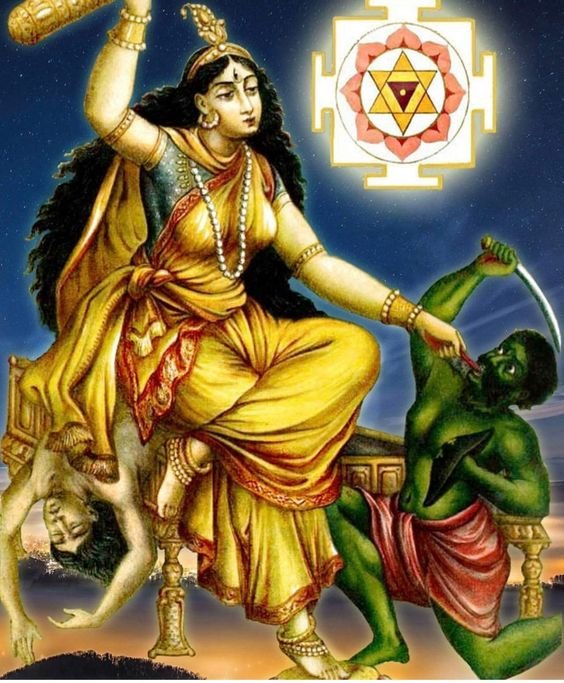
Bagalamukhi’s origins are steeped in mythological tales. According to a prominent legend, the universe was being threatened by the Satya Yuga, a great storm that caused immense chaos in the creation. In response to this storm and chaos, the gods invoked Bagalamukhi, who emerged from the Haridra Sarovar also known as a lake filled with turmeric. With her divine strength, she was able to calm the storm and bring normalcy to the creation. In another narration a demon named Madan caused havoc on earth by troubling and murdering people. Bagalamukhi was once again invoked by the gods, who with her divinity, paralyzed Madan by holding his tongue and rendered him powerless. This act of subduing the demon highlights her role as a protector and symbol of divine intervention against evil forces.
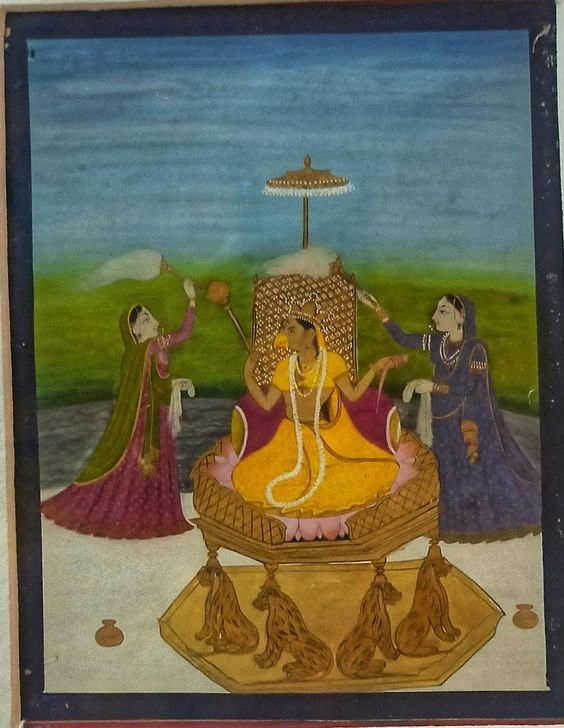
In her iconography the goddess is depicted as a golden-hued goddess, adorned with yellow attire, sitting on a golden throne in the middle of an ocean, wearing yellow flowers. The yellow in her iconography symbolizes the power of turmeric which is believed to have purifying and healing properties. In her many representations, she is typically shown holding the tongue of a demon in her left hand and a club in her right, emphasizing her dominion over speech and power. The crane, her vehicle, is a symbol of concentration and stillness, reflecting her ability to immobilize and dominate over misconceptions and delusions of worldly realms.
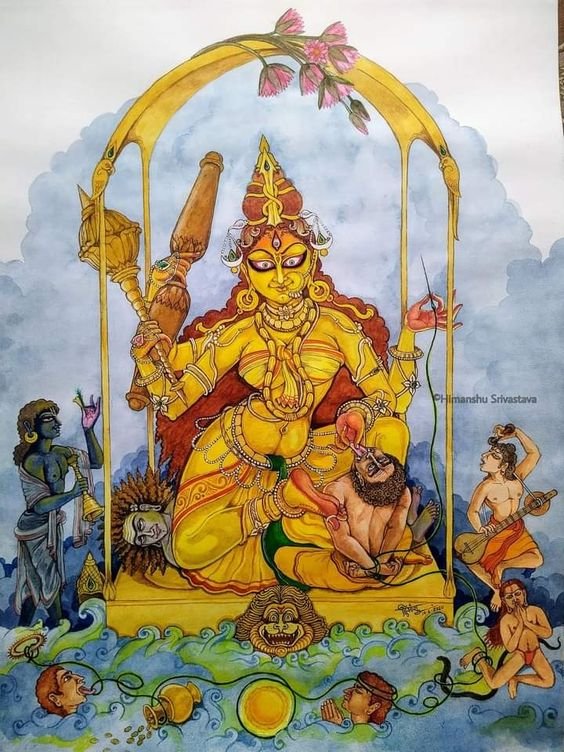
Bagalamukhi’s most distinctive power is her ability to paralyze or immobilize. This power, known as Stambhana, is depicted iconography through her act of holding the demon’s tongue. This showcases her ability to stop harmful speech and actions, effectively neutralizing negative forces. This power is invoked by devotees to gain control over enemies and adversaries, ensuring that harmful plans against them are thwarted. The goddess’s control over speech is a central attribute of her powers. By holding the demons tongue, she is seen as a powerful deity for those facing slander, gossip, or any form of verbal attack. Her worship helps the devotees ensure their words are truthful and impactful, while also protecting them from harmful words of others. Due to her paralyzing abilities, the goddess is often invoked by those involved in disputes and situations. Her power to stifle the opposition ensures success amidst the conflict the devotees find themselves fixated in.
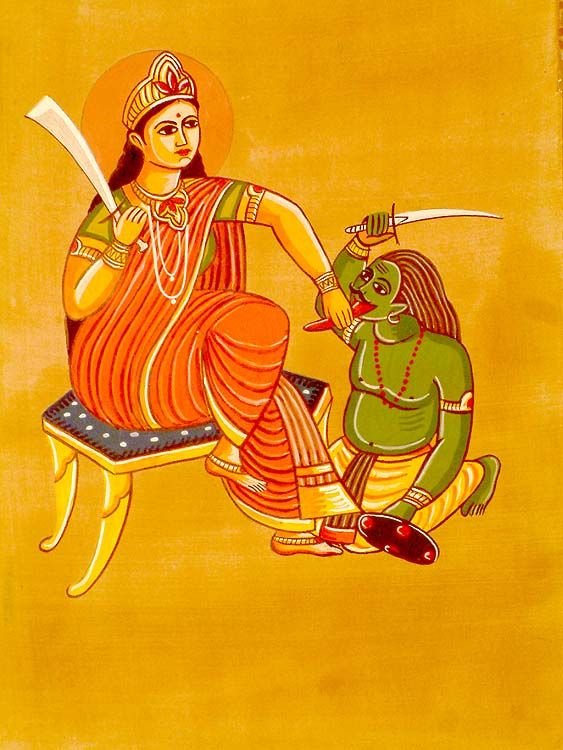
Bagalamukhi also serves as a powerful protector against various forms of negative energy. Her ability to neutralise threats makes her the most invoked upon deities among those who are seeking for spiritual awakening and protection. Bagalamukhi is portrayed with a club; this club symbolizes her strength and power to destroy ignorance and evil. This attribute highlights her role as a source of empowerment for her devotees. Apart from the paralyzing and immobilizing attributes, the accentuated yellow in her depictions and its correlation with turmeric represents her connection with qualities of healing and purification. This aspect of hers is invoked upon by the devotees in order to achieve a clean body, mind and soul, free from impurities and negativity.

A lot of her devotees and practitioners believe that the goddess can bestow siddhis or supernatural powers upon her devotees. These siddhis include the power to influence others, exceptional wisdom, and control over the elements of the worldly realms and life. In the Tantric tradition, Bagalamukhu’s role of subduing negative forces is well revered and celebrated. Tantric Sadhanas dedicated to the goddess includes intricate rituals and mantras that harness her stambhana shakti or paralyzing power for protection and spiritual ascension. Since tantric practices of invocation and rituals are intense in nature, the worship of the deities within this tradition requires a guidance of a well versed guru.

In Hinduism, especially in the Tantra traditions and Shakta traditions, the recitation of the 108 names of Bagalamukhi is believed to bring her blessings and protection. In order to do so a Mala Japa or a rosary with 108 beads are used to chant the goddess manta. Each bead represents one repetition of the mantra, helping the devotees to keep count and maintain focus. In Tantric tradition, the goddess is meditated upon the yantra, a geometric design and representation of the goddess. Worshipping her yantra involves focusing on the geometric patterns while chanting her mantras, which in return harnesses the power of the goddess. On the other hand, day to day worship of the goddess involves special pujas where yellow flowers, turmeric, sweets, fruits and ghee are offered to the goddess, including the fire sacrifice and fasting for the day.
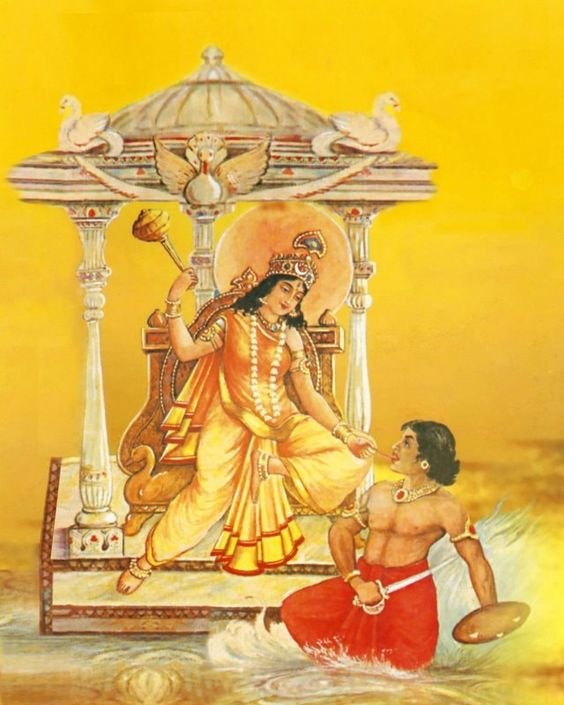
In India there are several temples dedicated to Bagalamukhi. The most famous temple is the Bagalmukhi Temple in Himachal Pradesh and the Pitambara Peeth in Madhya Pradesh. The goddess can be traced through various historical texts and practices. She is mentioned in the Maha Nirvana Tantra and other ancient scriptures, indicating her presence and important stance in the Hindu worship.
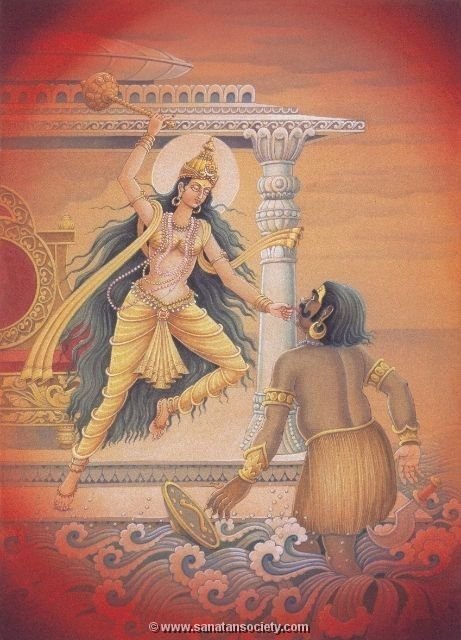
Bagalamukhi stands as a powerful symbol of divine intervention and inner strength. Her ability to paralyze and control adversaries stretched beyond the physical enemies and extends towards the inner turmoil that the devotees of hers grapple with in their everyday life. By understanding and embracing her worship, devotees find themselves surrounded by the source of spiritual power that aids them in overcoming the challenges of the life. By performing rituals, mantras and practices dedicated to the goddess, her devotees seek protection, success, and peace.


